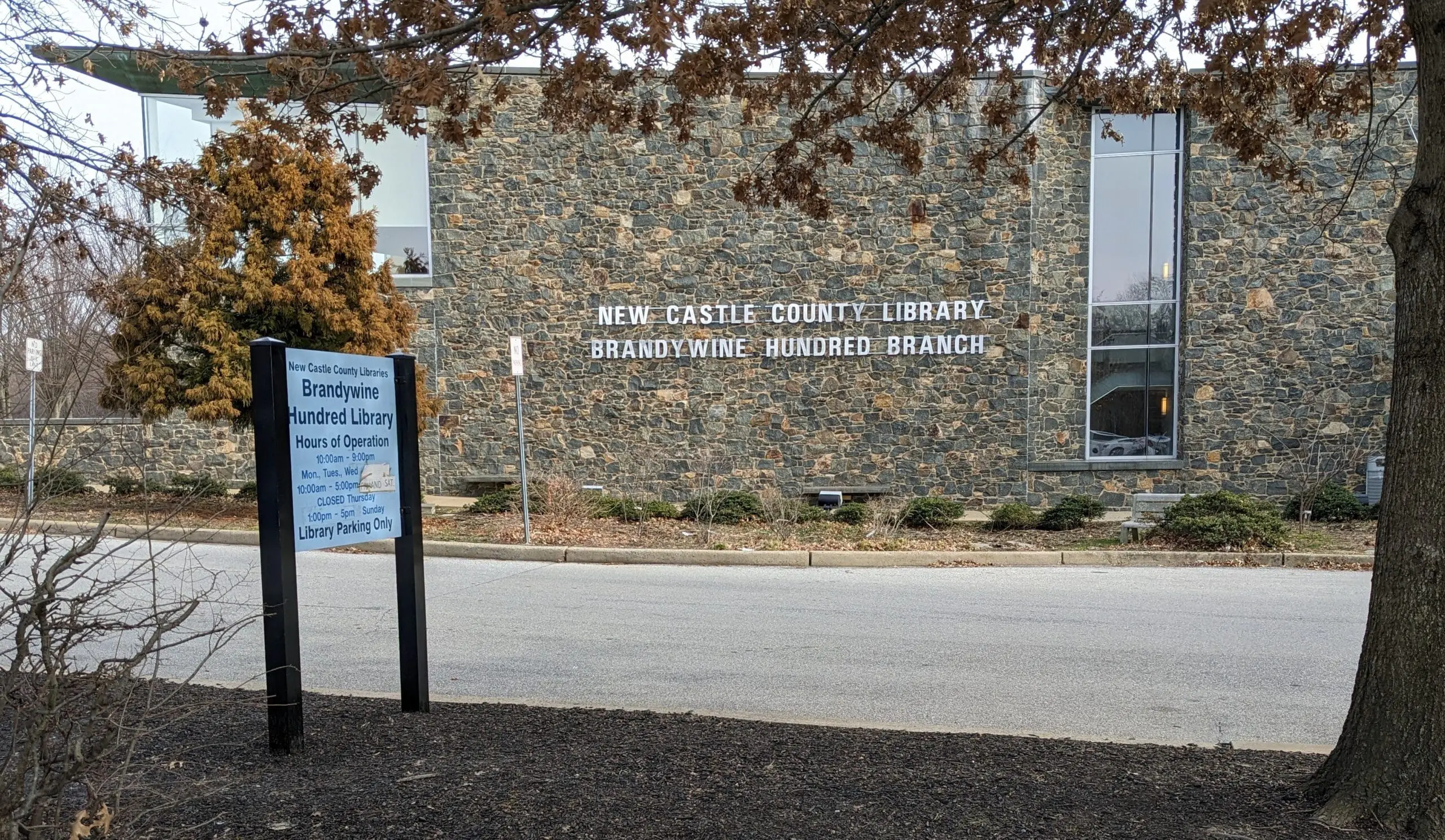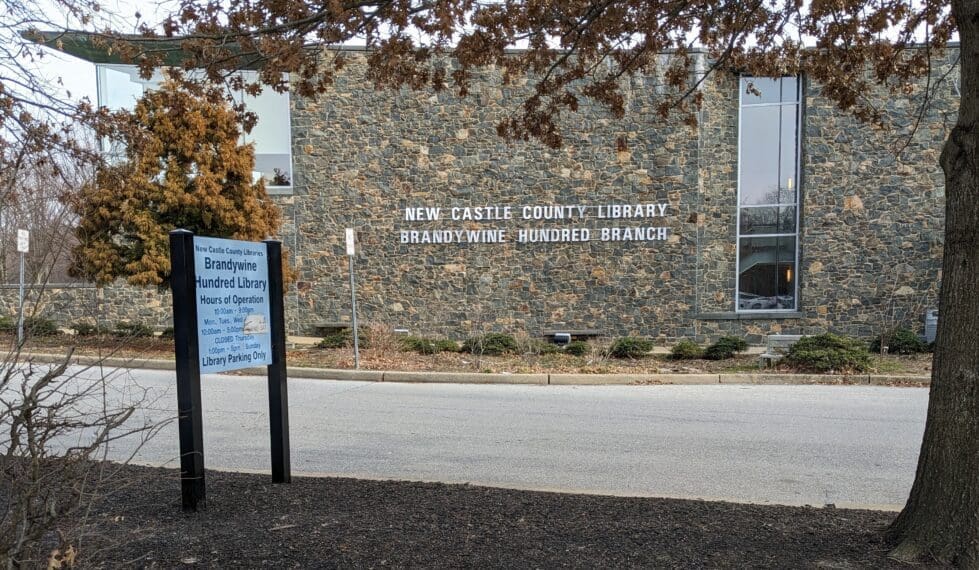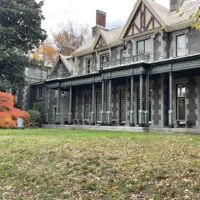

A library branch is named after its prominent Brandywine Hundred location. (Ken Mammarella photo)
Brandywine Hundred native Dee Durham has a simple but important reason for creating the Brandywine Hundred Historical Society: “All those stories that we don’t want to lose.”
“People want to learn about the about the history of where they live,” said member Pam Cawood Rizzo.
The society, like most modern things, started out about a year ago digitally, with a YouTube channel and a Facebook page. It’s lately added an email ([email protected]) and a mission statement (“Brandywine Hundred Historical Society seeks to collect, preserve and share the rich history of Brandywine Hundred”).
It hosts meetings on the second Wednesday of the month, with the one next featuring Leah Brooks of the Mt. Cuba Center on native plants. That meeting is March 8 at the Newark Union Church, 8 Newark Union Road, a short spur just off Baynard Boulevard in the middle of Brandywine Hundred.
The meeting site’s Colonial history dates back to 1687, when land was donated for a cemetery. In 2020, it was placed on the National Register of Historic Places, according to its Facebook page, and the Historical Marker Databasecounts at least eight historical markers within a mile or so. Cawood Rizzo believes the cemetery is one of Brandywine Hundred’s oldest remnants of European colonization.
“There’s a great excitement in saving history and sharing our stories,” said Durham, also a member of New Castle County Council.
Organization members are thinking about gathering artifacts, and they’re thinking of “taking responsibility for an endangered site,” she said. “And there are many to choose from.”
Two that sprung to her mind: the Talley house behind the Brandywine Hundred library and Ivyside Farm in Bechtel Park, off Naamans Road. Both are owned by the county.


An 1868 map of Brandywine Hundred.
The history of Brandywine Hundred
Cawood Rizzo is also encouraged by the First State National Historical Park, created in 2013 not far from where she lives, in the northwestern section of Brandywine Hundred. “They’re very eager to learn about the history of Brandywine Hundred and share it,” she said.
“The society is wonderful, and it’s been a long time coming,” she said. “There’s so much history here that development has not yet hurt.”
Local author W. Barksdale Maynard offers an interesting summary of Brandywine Hundred’s architecture over the decades for the Society of Architectural Historians.
There are 33 hundreds in Delaware, and the Delaware Geological Survey dates them back to 1687, following the 1682 decision by William Penn to divide Delaware into townships of 100 families. Their number and their boundaries have changed over the centuries. “A hundred is an old English subdivision of a county, its origin shrouded in mystery,” the survey quotes John A. Munroe’s “History of Delaware.” “The name was used in many colonies but survived in America only in Delaware.”
The 1868 map in this post shows Brandywine Hundred being subdivided into districts, with areas being named for founding families from England, such as Talley, Grubb and Hanby.
The hundreds are best known for appearing on deeds, and some – like Brandywine, Pike Creek, Mill Creek and Pencader– continue on as the name of fire companies, roads, buildings and businesses.
Claymont, an unincorporated community in the northeast part of Brandywine Hundred, already has its own historical society.
Share this Post









